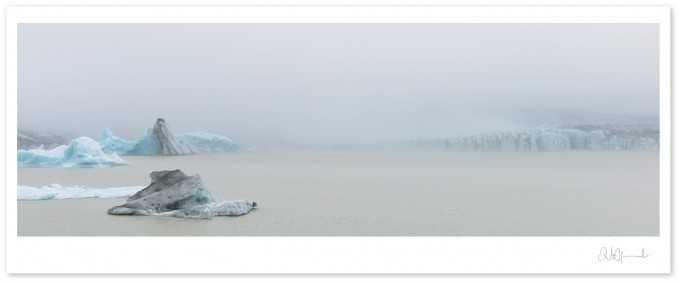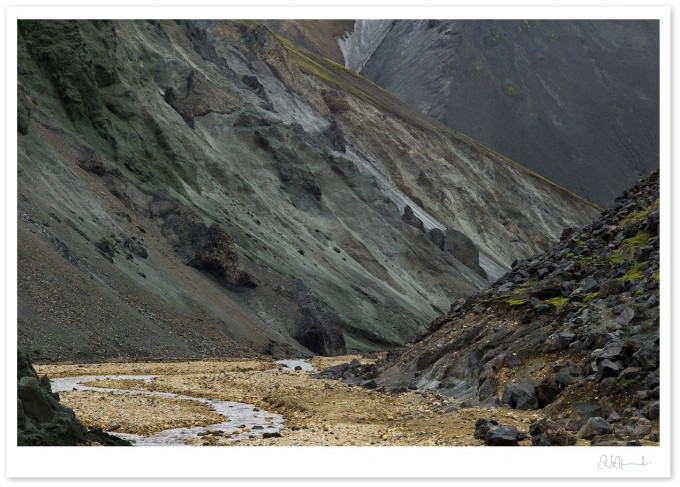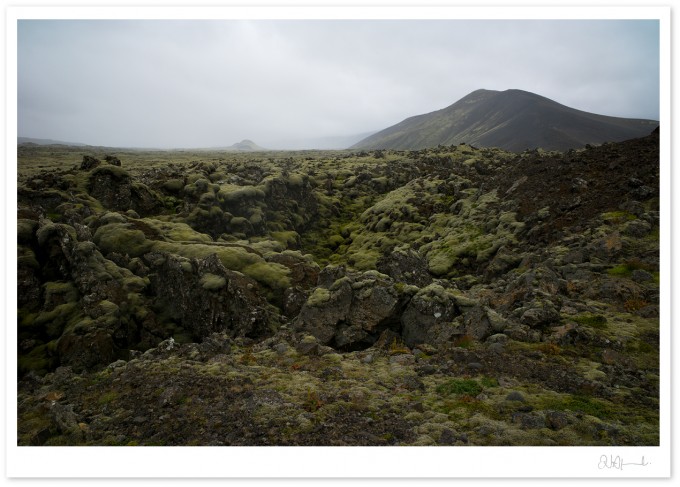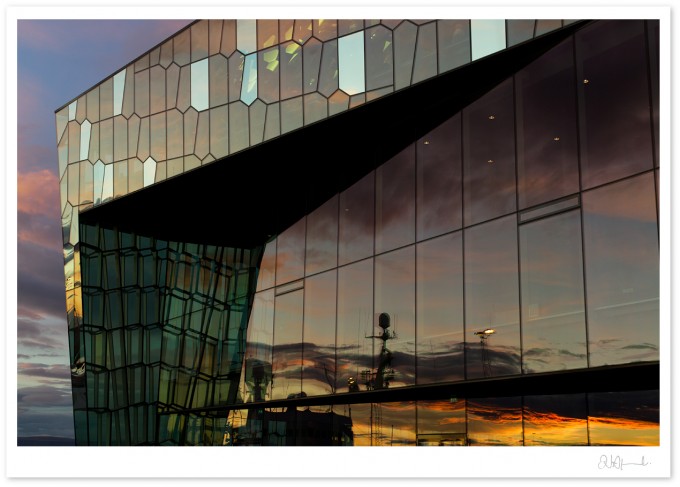Hello Steve,
My name is Harsh Agrawal, writing to you from Denver, Colorado.
I recently switched to Leica for the first time in my life when I purchased a black M9 in early April. This switch happened after shooting large format film (4×5) cameras (Arca-Swiss and Linhof), the Fuji Panoramic GX617, the Hasselblad H3DII 39MP and the Nikon D3X systems over the past decade. ‘Nature’ has been my ‘thing’ for the longest time, but I have a feeling I’ll be dramatically expanding my horizons with the M9 pretty soon here! I think you already know what I mean 🙂
I would like to contribute to your daily inspiration section with a very definite focus on why the M9 can be, contrary to popular belief, a superlative tool for landscape/nature photography! I just got back from Iceland last week after spending 10 days there and shooting with my M9 system for the very first time, really! I own brand new and the latest versions of the Summicron 90mm APO, Summilux 50mm ASPH (Silver) and the 28mm Elmarit lenses. Steve… I am truly blown away by the results – the RAW files are so jaw-droppingly sharp, corner-to-corner. I have never seen anything like this in digital before!
Please take a look at my Iceland images that I uploaded last night: (maximize your browser to see the images in their largest resolution)
http://www.harshagrawal.com/Iceland/
Let me know what you think.
best regards,
-Harsh
[ad#Adsense Blog Sq Embed Image]







Nate… tough question…. I’d say the toss-up would be between the 50mm Summilux and the 28mm Elmarit. For landscape-only work, the 28mm Elmarit would be my first choice – with a focus setting at just less than Infinity and an aperture of F11, I can get super-super-sharp focus from 5ft to infinity with no distortion anywhere!! On the other hand, the 50mm Summilux is obviously the more versatile of the two, even though I don’t get the same dof with it as compared to the 28mm Elmarit. Having said that, most of my Iceland images – including the icerbergs image – were made with the 50mm Summilux! I told you earlier… not an easy question for me to answer 🙂
Heiner,
Sorry it took me almost a week to reply to you…
With regards to “recreating” in Photoshop, as you’ve put it, there are tools in Photoshop like “Content Aware Fill” (CS5 onward) that intelligently “create” content that never existed in the original photograph! It’s kind of incredible what these tools can do, and at the same time so sad and revolting to honest photographers like myself who absolutely do not believe in faking their images in any way whatsoever. And I am not talking about fixing the color balance and/or adjusting brightness/contrast values. Software applications, like Photoshop, have become so powerful today that, heck, you don’t even need a camera anymore – you can completely fake an amazing image! So if that’s your ultimate goal, then by all means learn these digital tools. Check out the digital art work of Bert Monroy – it truly is astounding what he can do with Photoshop. Here’s the link: http://www.bertmonroy.com
On the other hand, if you want to pursue photography for the sheer love of photography, understanding that it takes a LOT of work, patience, practice, experience, thorough knowledge of the capabilities (and in-capabilities!) of whatever system you own, and an adequate amount of luck to make amazing images, then just do what photographers like myself do! My Photoshop workflow literally only involves fixing the overall color balance/cast because of digital sensor inadequacies or picking the wrong white balance to begin with, and adjusting the overall brightness/contrast using Curves. It takes me about 10 mins max to work on each image.
On to cameras….. You don’t need a $50,000 camera to make incredible images. I have made some very cool images with my iPhone as well – granted, they cannot be printed 8ft wide, but that doesn’t mean the images are not good!
Buy the M9, or the M10 next year for one and one reason only – the glass!! That’s the only reason I switched. The Leica optics are the best lenses in the world, IMO. IT’S ALL ABOUT THE GLASS – I truly believe that.
As David S replied to your post earlier, the “problem” is not with your Nikon 5100 – it is with the optics. Use any prime lens on the Nikon and it’ll blow your Panasonic FZ28 away. The Nikon5100 sensor size is 23.6 mm x 15.7 mm (370.5 sq mm). The FZ28 sensor size is only 6.12 mm x 4.51 mm (27.6 sq mm). This equates to the Nikon 5100 sensor being more than 13 times the size of the FZ28 sensor!! So just think about it. The Leica-branded lens on the Lumix, even though it’s NOT a real Leica lens, is still pretty good. However, no matter how good it is, it can not out-resolve a sensor which is 13 times larger in size even with a reasonable lens in front. So… please get a good – maybe a fixed focal length – prime lens for your Nikon and then test again.
Once again, thank you for your kind words regarding the quality of my work! Much appreciated. Keep your work as kosher as possible – you’ll derive immense satisfaction out of it in the end!
best regards,
-Harsh
Nate,
Get a M6 or M6 TTL Leica film camera and either a 24mm f/3.8 ASPH Elmar or a 28mm f/2.8 ASPH Elmarit. Both are excellent for landscapes. Don’t use a 21mm lens….it’s too wide. The 28mm f/2.8 Elmarit is a great lens and it’s cheaper than the 24mm f/3.8 ASPH. I bought the 24mm Elmar to use on my M8.2 digital Leica. On the M8.2 it has an effective focal length of 32mm. Also, the M8.2 has built in frame lines for the 24mm Elmarit. Buy a 28mm Elmarit. You won’t be disappointed. Especially if you use an M6, M7, MP or an M6 TTL.
Heiner,
The lens on the Lumix is not really Leica — Leica just licenses out its name to panasonic.
I agree with Daan below — the problem isn’t your Nikon, it’s the kit zoom you’re using. The $100 50mm 1.8 Nikkor is one of the best bargains in photography and will show you what your camera can do.
The 35mm 1.8 is a workhorse as well — not as good as the 50 but very good nonetheless.
If you have any doubts at all about what Nikkor lenses can deliver, check out Steve McCurry on Google — or see his pictures in person if you can. All shot on Nikon FM with Nikkor primes.
Heiner,
Don’t compare the kit lens of Nikon to other camera’s, i made that misstake 12 years ago and was very dissapointed with the Nikon 35-70 plastic lens compared to the Olympus Zuiko 50mm!
Get the 50mm 1.8 or 1.4 and you see a dramatic increase in quality, but the best lens for the D5100 is the Nikon 17-55 AF-S F2.8 that lens was glued to my D80 until i bought my D700.
Still loving to shoot film and just bought the Nikon Coolscan 8000 i think my first Leica will be a cheap M to shoot film with, but not sure wich one!
Hi Harsh,
out of the three lenses that you own, which one do you think is the most versatile for landscape and why?
cheers,
Nate
Your iceberg image is simply stunning, would love to see a huge print of this one. Great to see an M9 being used for this type of work!
Thanks for posting! I agree the M9 works well for landscape! It’s also much easier to carry!
Dear Harsh,
thanks for the reply.
After sending the message I thought that it had to be a magic moment of light to get a photo like this.
I have no experience yet with photoshop but is it possible to recreate this in pp when the light was not as beautiful?
I have a Lumix FZ 28 with a Leica lens (not as good but much cheaper than all the gurus here use) but when the light is right and the subject does not move it outperforms my Nikon 5100 with 18-55 mm, it got some magic that I could not get yet in 2 months with the Big Gun.
Problem is that you can buy aound 14 Nikons for one M 9 (but you only need one, hahaha..)
In general I am not impressed by most photos with M 9 on this web page. Most people try to recreate photos 50 or more years old but this is the 21st century, thing moved on. HCB or Amsel could not do what David LaChappelle or others are doing today. I still love Beethoven but I also listen to M Davis, Madonna and Dr.Dree.
Your photos are very good regarding composition AND IQ compare to a lot of crap by people who do not know what to do with their overpriced toys.
If my business continues developing as it did this year a M 9 plus glass would be fundable next year, but I am still not sure if it is worth the money.
Maybe some clever software is cheaper and can do the same, what do you think?
Best regards
Heiner
If you’re going to buy an M10, better start saving your money. The way Leica is raising their prices I wouldn’t be surprised if the M10 costs 10K. I have the money but it’s more than I want to spend on a digital camera. Other lenses that are great are: 24 mm f/3.8 Elmar and the new 35mm f/1.4 Summilux. I paid $5K for that one. I also have the 50 mm Summilux and the 50 mm Summicron. The 35mm Summicron is no stiff either. I have other Leica lenses, as well. I’m waiting for a very good 4/3 digital camera to come along (Steve Huff will point the way) and with the appropriate adapter will use my Leica lenses with the 4/3 camera. Expect to get great shots. I have a Leica M8,2 and surprisingly I like it a lot.
D!RK…. yes, some test shots are necessary to get precise framing. But then I need to do some test shots for the best exposure anyways, so I just combine the two objectives. Works for me at least!
Rick… completely agree with you, 100%. The three lenses I own – the latest 6bit versions of the 90mm Summicron, 50mm Summilux, and 28mm Elmarit – are all top-notch. I did not hesitate one bit spending my money on them. They are keepers for sure and I really do treasure them. Still, I have to say, Leica did a great job designing the M9 – by making it so light/small, perfectly proportioned, and SIMPLE enough to shoot. It kind of “gets out of your way” and just lets you shoot. Now I can’t for next-year’s release of the M10 🙂
onigo… thank you!
I do miss my large-format days some times…. Looking at the massive 4×5 Velvia Transparencies under a color-corrected lightbox….. wow…. what a high that used to be! I gave up large format hoping that the 40MP Hasselblad (H3DII 39) would be more than capable a system. Turns out, it wasn’t for me. I was just never comfortable with it. Never loved it. And the Hassy optics left a LOT to be desired. In the end the medium format digital experiment turned out to be a disappointment for me. The Leica M lenses, on the other hand, jaw-dropping DNGs!! In the end, you need to know your equipment – both its strengths and weaknesses – and love using it to get the most out of it!
I think the secret is to travel to awesome locations and go out and seek the light and shoot shoot shoot!!!!!
well prolly not, but then again, I’m not likely to take out the Leica s2 as I am with the M9s
Mark…. thanks!
I always, always use a tripod for all my nature/landscape work. I use a Gitzo Series 2 Carbon Fiber tripod with the Really Right Stuff BH-55 ballhead. I also use the Really Right Stuff custom base-plate for the M9 that slides directly into the ballhead. It’s a cool setup!
The last image out of the four was shot hand-held with the Summilux 50mm ASPH. When shooting hand-held, I shoot 3 images in the C (continuous mode) to avoid hand-shake in at least one of them.
Scotty… thanks! Stay in touch – maybe we can shoot together in Iceland when I go next year!
Heiner… thank you! The first one, of the icebergs, is my favorite as well!
Secrets…hmmmm… 🙂 Found the perfect place, by sheer accident, but it was raining like crazy, the visibility was extremely poor, and I was driving a little car on this remote gravel road not even knowing where it was going to lead me to! And then the scene happened! I waited it out, for more than an hour, before the rain stopped. And then the light began to play its magic. This image is EXACTLY the way the scene/drama unfolded in front of my eyes – absolutely ZERO Photoshop gimmickry, whatsoever! I spent maybe 5-10 minutes fixing the overall color cast, the overall brightness/contrast, and then cropped it to suit my artistic expression. In fact, that’s my exact workflow for all images. I strive to keep things as kosher as possible, always. That’s all. And of course, I always shoot with the camera mounted on my series 2 Gitzo carbon fiber tripod and Really Right Stuff BH-55 ballhead. I use a Singh-Ray neutral polarizer as needed, but not for this particular shot. Let me know if you have any more questions.
Minyan…. thank you for your kind words! I believe the M9 is a GREAT tool for landscape work for two reasons: one, because it is so small and light to carry around; second, because of the most unbelievable Leica optics! I would not have switched to the M9 were it not for the reputation of the M lenses. And oh my god, did they deliver on my trip! The jpegs here just don’t do justice to the incredible detail I am seeing in the DNGs on my 30″ Apple HD screen. But you are also right about a piece of equipment being in the right hands. I spent a LOT of time before the trip “learning” my new equipment – it’s strengths, weaknesses, idiosyncrasies etc etc. I definitely was PREPARED when I landed in Iceland! Yes, it is truly a majestic place – please go!!
Brian…. thanks… That’s my favorite one too! That place where I was standing when I made that image…. so unreal, dreamy, magical… all combined into one. Still so vivid in my mind…
D!RK… Yes, the framing takes a little effort with a rangefinder, but then I am always doing some test shots for proper exposure anyways, so I just play with the framing at the same time. At least for me, framing never was an issue with the M9 during the Iceland trip. After a while, I actually became quite good at precise framing on the very first try! Also, I was using the 1.4x magnifier, which helped a lot. The best part about the M9 system is the optics – no doubt about it. That’s the real reason I switched to the M9. The H3DII – I sold it on Ebay early 2010. The 40MP resolution was great, but the Hasselblad optics just didn’t cut it for me. Plus, lugging such a hefty system was not enjoyable at all. Since I don’t do extra large (6ft wide) prints anymore, I don’t miss the Hassy at all. I think I am a Leica convert for life now 🙂
Not sure that how much of the credit should be given to the M9 and how much to the Leica lenses you’re using. I don’t own an M9 so I can’t make that judgement. However, since starting to shoot with Leica’s I have been amazed at the quality of the lenses. Even my film shots are excellent. Long after the highly praised M9 has been made obsolete, your Leica lenses will still be producing great images. I can’t believe the quality of Leica glass. That’s where I put most of my money. I have a camera cabinet full of obsolete digital cameras. My Leica glass has a special reserved place in that same cabinet.
superb!
your comments says a lot especially that you’re coming from large format down to rangefinders.. we commoners have always been taught to believe that medium & large format is always a step above.. but your shots are exception to the rule..
These are really great. I especially like the first and third shots. Very nice work, Harsh!
Great shots.
Did you use a tripod or handheld?
Harsh….awesome!! I agree, the M9 is an excellent tool for landscape photography…you are so right, sharp edge to edge…the Leica optics really shine especially for wide angle. Great photos…wish I could have been shooting right beside you on your trip to Iceland…on my bucket list for sure!!
Better then Leica S2?
Dear Harsh,
very nice photos (and I usually am not impressed by photos published on this web page!)
The first is one of the best I have ever seen here.
Would you share your secrets with us, how did you do it?
Best regards
Heiner
Absolutely stunning work! Really beautiful details 🙂
AMAZING!
wow superlative work!!! I think the M9 in the right hands is the best digital camera in the world, and you’ve just supported that claim more. Iceland is a majestic place that I hope to visit with a M9 in hand ; )
The shot with the icebergs is my favorite. Love it.
I agree with you that the M9 is great for landscape. You may have to take some test shots to check on the actual framing but the camera is small and the lenses superb. Ideal to take around. Great photos with beautiful detail and color. Thanks for sharing. What happened to the H3D2? Do you still use it?